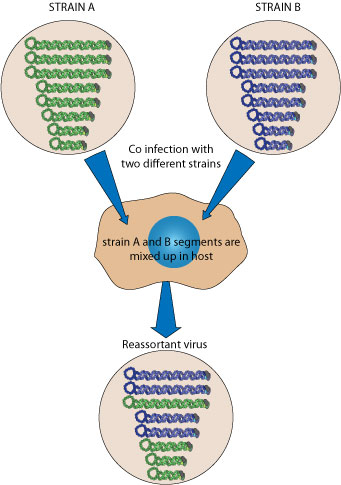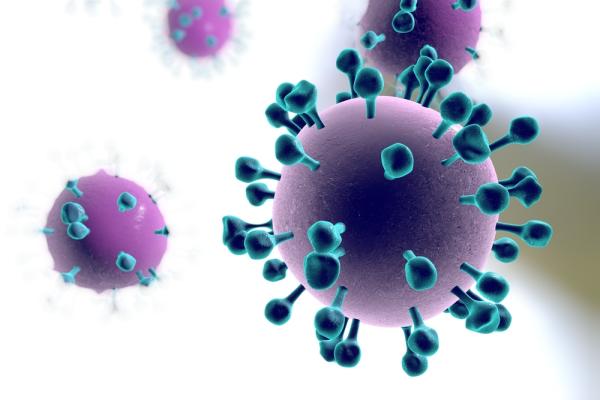The fall brings with it cooler days, apple picking and flu season.
We know what the symptoms of the flu are, how it is spread and the importance of getting a flu shot. What we may not know is the difference between the strains of the influenza virus and why are they referred to by the letters H and N - followed by numbers.
This may be a bit "inside biology" for some, but, in case you are wondering what these names mean and how they come about, here is a look into the virology behind the influenza virus.
Strains of influenza are characterized by two proteins that are on the outer surface of the virus: hemagglutinin and neuraminidase. This is where the "H" and "N" in the name come from. The proteins can be seen in the picture above, represented by the blue "spikes" on the outside of the virus. Both of these proteins are required for the virus to cause an infection and perform complementary functions. The hemagglutinin is critical for the virus to be able to attach to, and then enter the cell. Without hemagglutinin, the entire process of infection could not be initiated.
Once in the cell, the virus takes over the normal cell machinery and uses it to make many copies of itself.
Then, the neuraminidase enzyme comes into play. Neuraminidase is required for the newly made viruses to escape the host cell, where they can then perpetuate the infection. It's role is to clip the newly made viruses from the membrane of host cell and release them. Without neuraminidase, the new viruses would stay attached to the host cell, unable to infect new cells.
When a person becomes infected with influenza virus, their body's immune system responds by making antibodies to the H and N proteins. Then the antibodies bind to the H and N proteins, and block them from doing their job, stopping the virus in its tracks.
However, with influenza virus, the situation is even more complicated.
Influenza's complexity starts with the fact that there are 14 versions of H protein and 9 versions of N which means that there are a total of 144 varieties of flu. Not all of these 144 are infective.
Additionally, there are two major processes that create a complicated situation even worse. These are called antigenic drift and antigenic shift.
Antigenic drift means that either H or N change in a particular strain. This results in new strains, and this trips up the immune system. When H and N mutate, it is possible that they change so much that the antibodies may not bind to them anymore, leaving the virus fully infective.
The concept of antigenic shift is more complicated, but, stay with me for a moment. In order to understand antigenic shift, first we must understand how the genome of influenza is stored inside the virus. Influenza belongs to the orthomyxoviridae family of viruses. This means that, unlike our genes, which are made up of DNA, the flu virus's genome is made up of RNA - eight separate pieces of RNA. Flu is an example of an RNA virus with the hemagglutinin and neuraminidase genes are found on different pieces of RNA.
When two different strains of flu infect a cell at the same time, the pieces of RNA (eight from each virus) mix together. This is called reassortment and results in a new strain.
In looking at the figure below, let's say that strain A (with the green RNA) is an H1N1 virus and strain B (with the blue RNA) is an H2N5. In the figure, both of these viruses are infecting the same cell at the same time. When in the cell, the 16 pieces of RNA mix together and the virus that is released from the cell is different (a combination of some green RNA and some blue RNA) from either of the original ones that went in.
This process makes pandemics more likely because the strain that results from the reassortment may be a more dangerous strain and also one that no one has been exposed to before.

Within the past century, there have been four flu pandemics (worldwide epidemics.) They occurred in 1918 (H1N1 - swine flu), 1957 (H2N2), 1968 (H3N2) and 2009 (H1N1) and experts agree that it is not a matter of if, but when, the next pandemic will strike. It is not simple to predict which flu strain will be wreaking havoc next and the flu vaccine varies in how effective it is from year to year. Knowing about the complexity of the influenza virus's genome and its ability to undergo antigenic shift and drift help us understand, at least to some extent, what we are up against each year.




